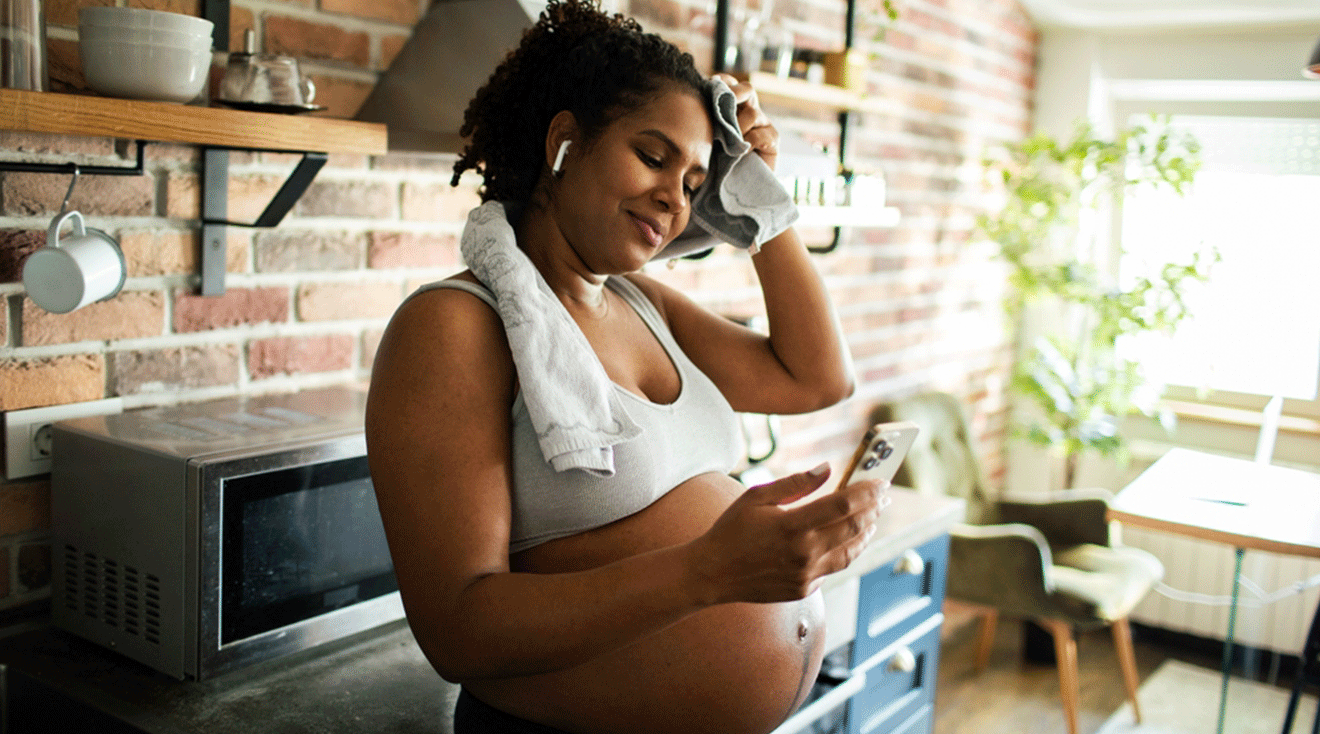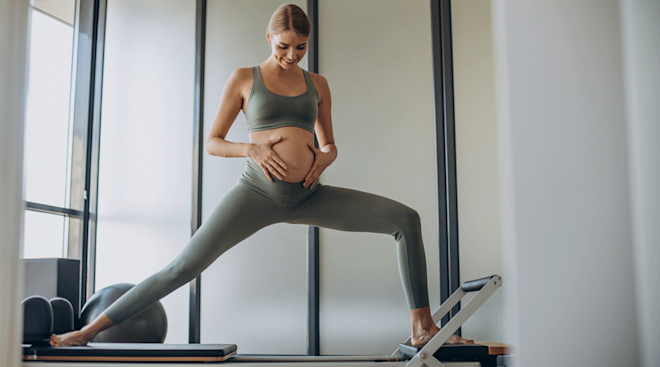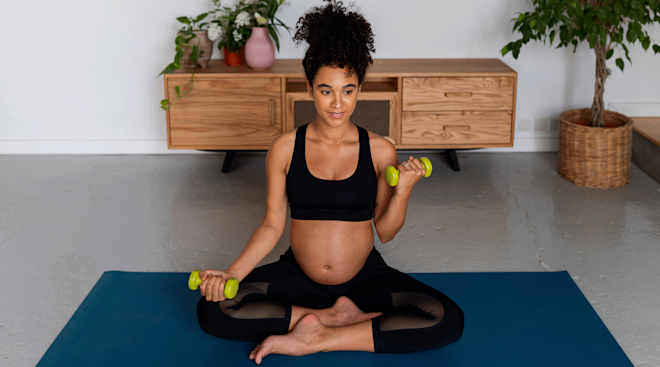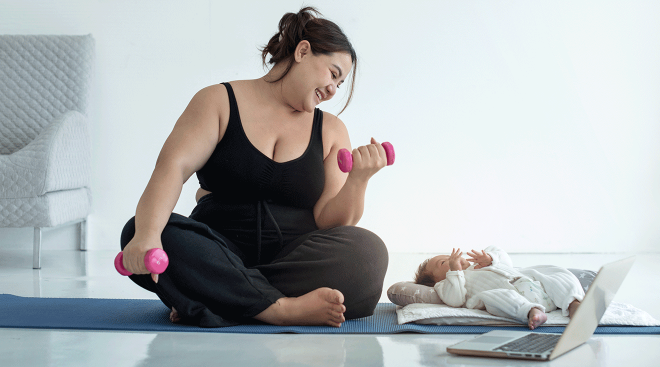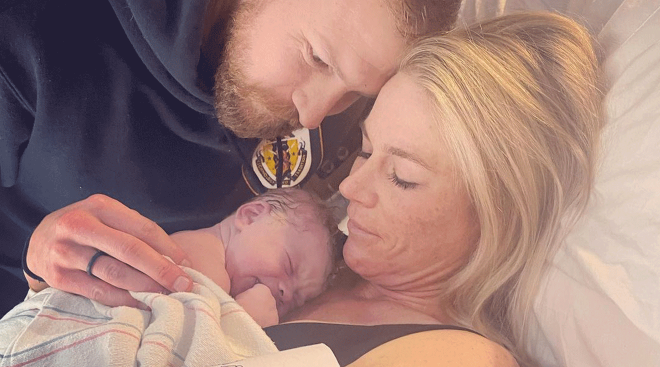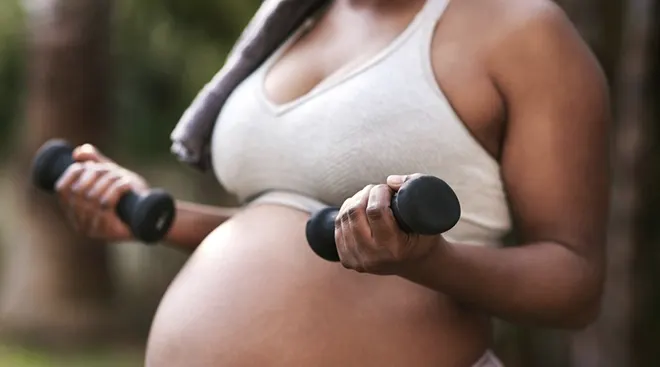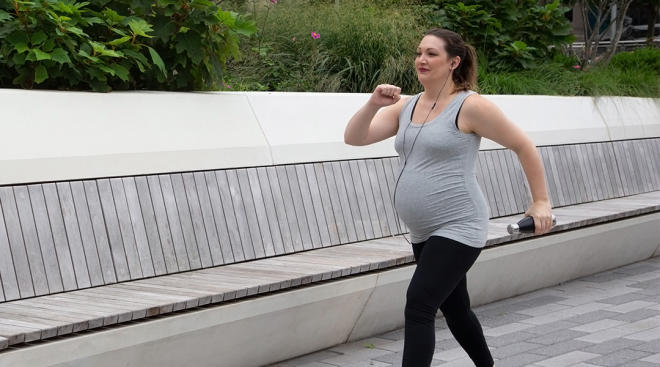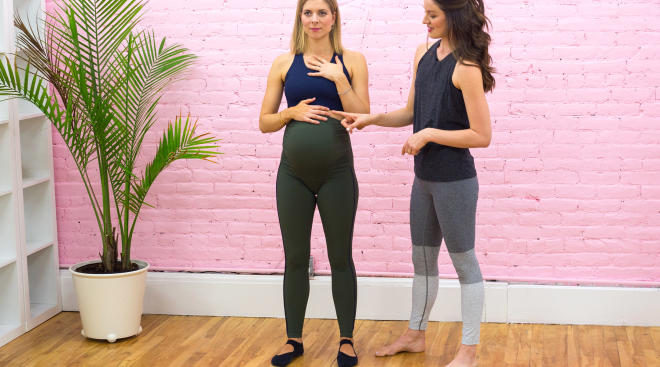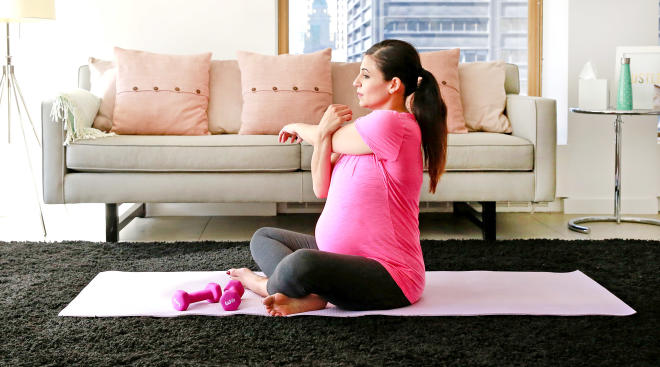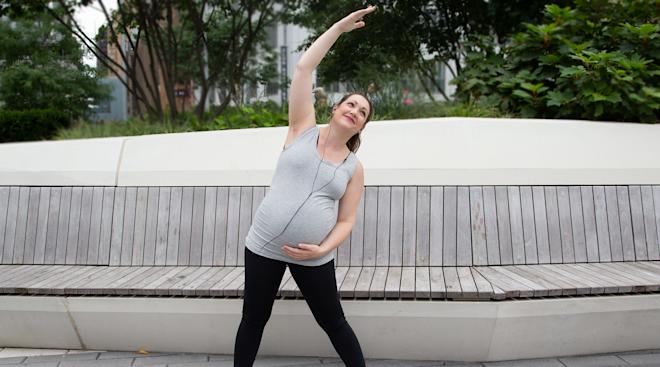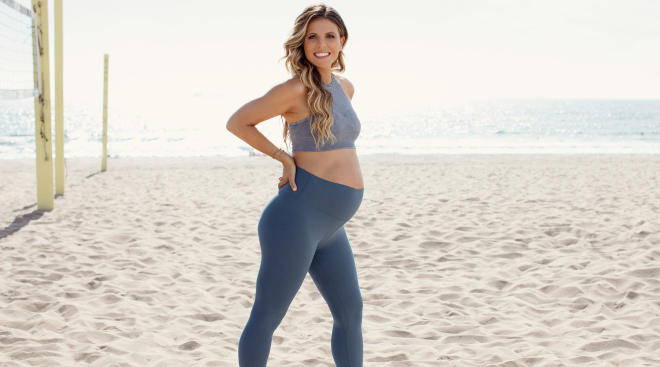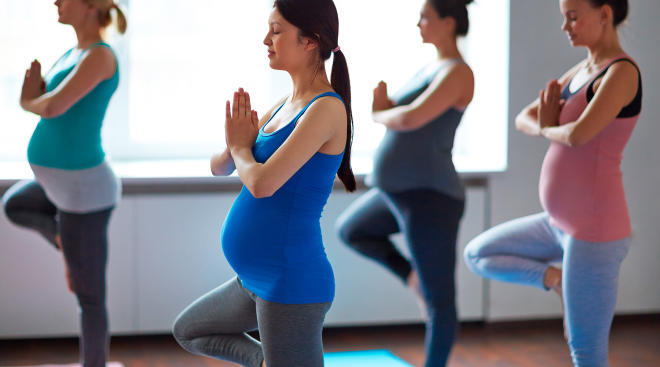Exercise During Pregnancy: How Much Is Too Much?
Lea-Ann Ellison, 35, never expected to find herself at the center of a social media firestorm. But when the Los Angeles–based mom of three logged on to her Facebook page one morning, she was stunned to find more than 5,000 comments on an image she had posted of herself lifting a barbell during her daily CrossFit workout. Why the backlash? Ellison was 32 weeks pregnant at the time—and the weight above her head looked almost as big as she was. “People wrote some very ignorant remarks, telling me that my choices were selfish and I was risking hurting my baby,” Ellison says. “They said I’d be to blame if anything happened to him.”
Ellison isn’t alone in catching heat for her exercise decisions. A few years earlier, mom-to-be Amber Miller ran the Chicago Marathon at 39 weeks pregnant—and gave birth to her daughter just hours later. Internet naysayers questioned Miller’s judgment, wondering why she did something that seemed so extreme and self-involved at a time when she should have been focusing on her child. More recently, Kristina Olivares, an Australian surfer, raised eyebrows for riding waves through all nine months of her pregnancy.
While all three women delivered very healthy babies, the controversy continues over whether or not moms-to-be should keep doing high-intensity workouts right up until childbirth. Can rigorous workouts put expectant women and their babies at unnecessary risk, or can it actually be healthy activity? How much prenatal exercise is too much?
When it comes to the question of whether intense workouts are safe during pregnancy, the expert consensus flies in the face of those social media shamers. “As long as she consults with her doctor and gets clearance, there’s no reason that a healthy woman—one who isn’t deemed high risk—can’t continue the same type of workout she was doing prior to getting pregnant,” says Raul Artal, MD, editor for The American College of Obstetricians and Gynecologists’ (ACOG) Clinical Updates in Women’s Health Care.
Even the popular training regimens that may seem extreme to some, like long-distance running, cross-training and indoor cycling, are safe for pregnant women to continue, Artal says—but only if they’ve already been doing them regularly pre-pregnancy and they’re under the supervision of their physician.
Of course, not every type of activity is deemed safe. According to ACOG’s latest guidelines, expectant women shouldn’t participate in contact sports like kickboxing and karate, or activities in which you could inadvertently get hit with a ball, such as soccer or softball. You’ll also want to avoid the potentially hard falls you could take when skiing, snowboarding or horseback riding, and you should definitely skip scuba diving (it puts baby at risk for decompression sickness or even death).
But while certain workouts aren’t advised during pregnancy, exercise overall is highly encouraged. “In fact, we strongly recommend that moms-to-be aim to get at least 30 minutes of physical activity five times per week,” Artal says. According to the ACOG, working out when expecting can not only maintain or improve your physical fitness, but it can also help ensure healthy pregnancy weight gain, lower the risk of gestational diabetes, preeclampsia and c-section delivery, and shorten your postpartum recovery time.
Somewhere along the way, you may have heard that exercise during pregnancy is only safe if you keep your heart rate below 140 beats per minute. So then how, you may wonder, can super-active workouts like spinning, Zumba or circuit training be good for you? Because the 140 beats-per-minute recommendation is actually outdated. “It’s long since been tossed out by the medical community,” says James Pivarnik, PhD, FACSM, professor of kinesiology and epidemiology at Michigan State University. And Artal, who was among the doctors who came up with the guideline a few decades ago, confirms that sentiment. “Newer research has since shown that our original theory was invalid,” he says.
Doctors now agree that instead of watching your heart rate monitor while working out, you should simply listen to your body. They recommend using perceived exertion—meaning how hard you feel you’re working out—as the benchmark for deciding when to slow down or stop. If you chart your exertion on a scale of 1 to 10 (where 1 means you’re barely moving and 10 means you’re almost completely out of breath), you want to stay within the 6 to 7 range. Working out in that zone (rather than a 3 or a 4) can actually have positive effects on your pregnancy, according to research.
To stay in a safe range, Pivarnik recommends making sure you can still hold a conversation during most of your workout; you should be able to talk normally, but not be able to sing. If you’re out of breath or can’t finish a sentence, slow down. Stop exercising immediately if you begin to feel weak or dizzy or are in pain.
Even the most well-conditioned fitness buffs may need to make adjustments to exercise routines to accommodate physical changes during pregnancy. Moms-to-be can be at slightly higher risk for injury because their bodies are producing higher levels of relaxin, a hormone that loosens up the ligaments and joints, Pivarnik explains. While relaxin makes your body better prepared for labor, its increase also means you’re more susceptible to rolling your ankles or over-stretching your joints. “You don’t have to stop doing your favorite workout,” Pivarnik says, “but you need to be particularly vigilant about listening to your body and not pushing yourself to do more than what feels comfortable.”
Modifications to your prenatal workouts may include lifting lighter weights, pedaling more slowly during a spin class or running fewer miles at a reduced pace. If you practice yoga or Pilates, your instructor will likely recommend modified poses that accommodate your shifting balance, and avoid positions that call for you to lie on your back for long periods of time. It’s also essential to keep yourself well hydrated and avoid becoming overheated. That means while a prenatal yoga class is a good idea, a hot yoga class definitely isn’t. If you’re exercising in a class setting, make sure the room you’re in has good airflow and that you’re positioned near a door so you can make an easy exit if necessary.
“If you’re not sure how to best modify your movements, don’t be afraid to ask your instructor to help you,” says Jolie Walsh, a New York City–based SoulCycle instructor, who continued to teach and ride throughout both of her pregnancies.
The bottom line: Doctors agree it’s critical to remain active during your pregnancy—so long as you’ve come up with a plan with your ob-gyn and follow all her instructions for keeping you and baby safe. Sticking with the workout you love may be the best way to prepare your body (and baby’s!) for the marathon of labor and delivery ahead.
“After I got pregnant, my whole mind-set about working out changed,” Ellison recalls. “It wasn’t a competition anymore. It wasn’t about looking good anymore. Exercise was about staying strong and healthy so that I could be in great shape for one of the most important events of my life: helping my new baby come into the world.”
Please note: The Bump and the materials and information it contains are not intended to, and do not constitute, medical or other health advice or diagnosis and should not be used as such. You should always consult with a qualified physician or health professional about your specific circumstances.
Plus, more from The Bump:
Navigate forward to interact with the calendar and select a date. Press the question mark key to get the keyboard shortcuts for changing dates.
































